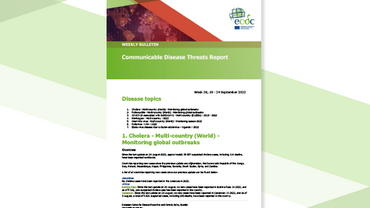Detection and control of poliovirus transmission in the European Union and European Economic Area
This document discusses options for EU/EEA Member States to enhance their polio surveillance, mitigate risks and respond to outbreaks in the EU/EEA. It is based on three ECDC risk assessments that were published in 2013, an ECDC-convened expert consultation meeting, literature review, and discussions with experts in polio. The focus is on options for strengthening polio preparedness in EU/EEA Member States and the aim is to support decision-making processes.
Executive Summary
Europe was certified polio-free in 2002 but the threat of reintroduction of wild-type poliovirus into the EU/EEA area remains as long as polio has not been eradicated. The detection of wild-type poliovirus transmission in Israel, and the outbreaks of paralytic poliomyelitis in Syria and parts of the Horn of Africa in 2013, increased the risk of importation to the EU/EEA. There are concerns about the quality of surveillance for acute flaccid paralysis (AFP) in the EU/EEA, and about the capacity to detect and respond to poliovirus transmission in a timely manner.
The new ECDC technical report discusses options for EU/EEA Member States to enhance their polio surveillance, mitigate risks and respond to outbreaks in the EU/EEA. It is based on three ECDC risk assessments published in 2013, an ECDC-convened expert consultation meeting, literature review, and discussions with experts in polio. The focus is on options for strengthening polio preparedness in EU/EEA Member States and the aim is to support decision-making processes.
The following areas are covered by the report:
- surveillance of poliovirus and acute flaccid paralysis,
- risk mitigation,
- outbreak response and choice of vaccine, and
- comparison of the use of oral poliovirus vaccine and inactivated polio vaccine as an outbreak response.





